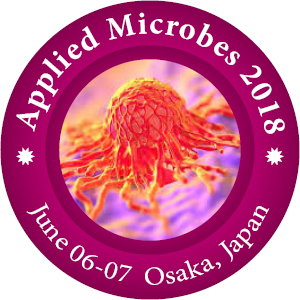Kyu Seok Jung
National Institute of Agricultural Science, Korea
Title: Microbial analysis of red pepper and red pepper cultivated soil in Korea
Biography
Biography: Kyu Seok Jung
Abstract
The occurrence of various pathogenic microorganisms on farms is a concern if they are able to contaminate fresh produce, which provides entry into the food supply. This study was undertaken to assess the microbiological quality and prevalence of pathogens in red pepper and red pepper cultivated soil in Korea. Microbiological analysis of red pepper and soil obtained from 8 farms, respectively, were conducted to determine the total aerobic bacteria count, coliforms count and the prevalence of Escherichia coli, Bacillus cereus, Salmonella spp., Escherichia coli O157:H7, Listeria monocytogenes. The total aerobic plate counts in the red pepper and soil were in the range of 3 to 8 log CFU g-1 and 6 to 8 log CFU g-1, respectively. In the red pepper, coliforms were detected in the range of 2 to 7 log CFU g-1 and E. coli was not detected. In the soil, coliforms were detected in the range of 1 to 6 log CFU g-1 and E. coli was in the range of 1 to 4 log CFU g-1. In 3 out 63 red pepper samples, B. cereus was detected, while other pathogens were not detected. In 53 of 54 soil samples, B. cereus was detected, while no pathogens were detected. This research provides information regarding microbiological quality of red pepper and red pepper cultivated soil.

